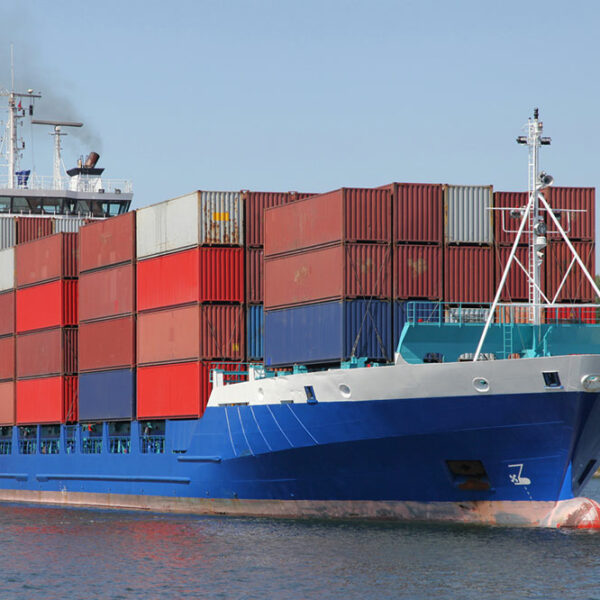Freight shipping – Its pros, cons, and other things to know
The process of transporting goods, commodities, or cargo by air, sea, or land is known as freight shipping. There are three most common forms: intermodal freight shipping, less than truckload (LTL) freight shipping, and truckload freight shipping. Since the transportation happens via plane, ship, train, or truck, the most commonly used transport vehicles for freight shipping include large ships, railroad cars, and trucks.
What are the benefits of freight shipping?

The primary reason why people use freight shipping is to ensure that their goods reach their destination safely, right in time, and in the most affordable manner. Now, whether you choose to ship via sea, land, or air, there are a number of benefits of freight shipping.
- Top carrier choices
Every time you ship something, you would want an assurance that it not only reaches the destination in time but also gets there safely. For this assurance, you can reach a reliable freight service agent, either online or offline, who works in association with supreme-quality carriers.
- Save on shipping costs
Businesses usually do not have the requisite time and energy to search for different carriers, then get quotes from all of them, and compare the quotes to find the best plausible freight rate. So, you can look for an agent who offers quotes from all the top freight shipping companies, and then you can make your choice.
- Timely delivery
If you pick the right agent, you can be assured that they will ensure that if there’s a certain high-priority item, the package reaches customers within a tight time frame. Most of the freight shipping providers have different methods of delivery available. You can pick one that best matches your time frame.
Modes of freight shipping
There are a bunch of different freight shipping modes. Here, we’ll discuss each of them one by one.
- Less than truckload (LTL)
This freight shipping is ideal for shipments, which though larger than the size of the parcel, aren’t big enough to fill up the space of an entire truckload trailer. If a shipment weighs anywhere between 150-15,000 pounds, it would fall under LTL freight shipping. - Full truckload (FTL)
In this type of freight shipping, pallet or bulk loads are shipped. These items are usually those that are big enough to fill up the space of an entire semi-trailer. Such shipments usually weigh over 15,000 pounds. The good thing about FTL freight shipping is that it is the most cost-effective option. Moreover, such shipments lower the risk of freight damage and require fairly lesser handling as opposed to LTL freight shipping. - Partial truckload (PTL)
In PTL, you have the option of splitting the truck cost with some other shippers. So, naturally, it would result in some cost savings. It is an ideal option when your shipment is more than 6 pallets or weighs higher than 5,000 pounds. - Intermodal
This type of freight shipping typically involves a combination mode, mostly including a truck and rail. However, it can certainly involve an array of other different modes of transportation, too, such as ships, trucks, or rail. The reason for using intermodal freight shipping is streamlining the entire process of shipping. The inclusion of rail in the freight shipping can drastically lower the shipping cost as it reduces the fuel usage per item. - Expedited
If a particular shipment is time-sensitive, and the freight needs to be delivered quickly, then expedited freight shipping method is used. It primarily refers to items that are transported either via air or truck.
Types of FTL equipment used for freight shipping
The equipment that is used to transport FTL (Full truckload) freight, depends primarily on the commodity. Here are some of the most frequently used FTL shipping equipment.
- Dry vans
One of the most popular types of freight equipment employed by most commercial trucking agencies are dry vans. The vans can handle freight up to 45,000 pounds and have a length of 48/53 feet. Freight shipping companies usually use dry vans for the hauling of dry goods. - Temperature control
In this type of shipping equipment, those goods are hauled that are typically climate-sensitive. Also, regarded as refrigerated shipping, it is mostly used when items are temperature-sensitive or perishable. Some of the items that are transported via this method include dairy and pharmaceuticals. - Flatbed
If you have to ship an item that is bulky, oversized, or oddly shaped, then flatbed shipping equipment is used. It would include items such as lumber or machinery. This method is never recommended for items that are weather-sensitive or fragile.
What factors affect the cost of freight shipping
As far as freight shipping is concerned, there are a couple of aspects that increase or decrease the freight cost. Here’s a list of some of the most common reasons that lead to an increase or decrease in price.
- Shipping method
Firstly, the mode of transportation that the company uses to haul the freight will have a direct impact on the cost of freight shipping. For instance, expedited shipping would naturally be costlier than the other methods of shipping. - Weight or size
Next, the weight and the dimensions of the freight will also have an impact on the cost of the freight shipping. For this purpose, the width and the length has to be rounded off to its next inch. However, the exact weight measurements are certainly pivotal for rate assessment, and for catering to the regulations set by the Department of Transportation. - Destination and origin
The distance between the origin of shipping and delivery destination will also have a direct impact on the rate charged. The farther this distance is, the price paid towards freight shipping will be higher. Proximity to one of the central metros will also affect the rate charged. - Government regulations
The prevailing government regulations, too, have an impact on the pricing of the freight shipping. For instance, certain states have fixed driving hours for all commercial operators. Besides this, there are certain other government standard regulations that impact the cost of the freight. You should be aware of the prevailing regulations to get a better assessment of the fairness of the prices charged by the freight shipping company. - Additional surcharges
At times, the surcharge is added to the freight shipping rate for extra service or any service beyond the fixed business-to-business or dock-to-dock delivery. For instance, the surcharge will be added by the carrier for internal delivery; residential pick-up or delivery; delivery to a place that has only limited access, such as storage facilities, prisons, schools, churches, or lift-gate delivery. Furthermore, a fuel surcharge is usually added to all freight quotes by almost every carrier. - Carrier base rate
Every carrier has a fixed base rate that is computed for every 100 pounds. However, the freight broker has the power to negotiate this rate for a certain shipment with the carrier if the carrier requires volume to fetch FTL on a particular route. - Special requirements
If your freight needs special handling, such as hazardous materials, fragile items, or perishables, then the shipping costs would be higher.
Important things to know about freight shipping
All of us are well aware of the fact that there are a plethora of factors that are taken into consideration during freight shipping. Here, we have listed some of the most important and common questions to help you understand this subject better.
- What can one ship via freight?
Well, to put it simply, you can ship anything and everything via freight. There are an abundance of carrier options available in the market. Some are specialist carriers who deal only in a particular type of shipping or goods. Furthermore, there are different freight shipping modes that ensure that your freight reaches its destination in due time. - Which freight solution do you need?
To assess the type of shipping solution needed, you must take into consideration a myriad of factors. So, you can state your requirements to the freight shipping company, and they’ll help you with the right selection. - How is a parcel different from a freight?
A parcel is an item that is lightweight, small in size, and is shipped individually. Usually, parcels weigh less than 150 pounds. On the other hand, freight collectively refers to a large collection of boxes.
- What does freight classification mean?
A standardized mechanism that is designed to give the carriers and consumers a uniform structure of pricing during freight shipment is known as freight classification. Factors such as value, density, and weight, determine the freight class. The freight class number ranges from 50 to 500.
Should you use a freight delivery service?
When you have to ship freight, you might be faced with a bunch of challenges. The challenges worsen when adequate partnership or knowledge is not in place. These issues range from personnel to delivery. Hence, you are required to be better prepared to tackle these challenges. Though these challenges can arise anytime during the process of freight shipping, there are some hiccups that shipping services usually encounter.
Listed below are some challenges that you might experience now and then.
- Personnel
Freight shipping can be challenging for small businessmen. It is a great idea to always have a robust team to cater to the surge in demand during any season. To overcome this hassle, you can look for methods to develop a team of partners or talented individuals with a reliable freight service agent. - Finding the best option available
The freight moves from one point to another in a multitude of ways. Though it helps to have different options, some shippers feel overwhelmed or do not have adequate knowledge of the plausible choices available. From FTL to LTL, you should understand the different options to find out which of the available options would be the best for you as well as your team. Moreover, having adequate knowledge of the entire shipping landscape can help you save a lot of money and time. - Finding the most cost-effective shipping
It may not be easy for you to find the freight shipping that offers you the facility at the most convenient prices. The entire process would require a lot of research. Things would get tougher when you do not have the right tools. At times, shippers have contractual obligations that hinder flexibility, while some have to make several calls just to find the perfect rate for a single shipment. If you lock the rates much ahead of time, you’ll be able to ensure that you have a great deal moving forward; otherwise, you would be forced to pay a high rate. - Documentation and preparation
A lot of times, shippers are just not ready to carry on this entire process, which might be a bit cumbersome. Right from proper filling of cargo bills to identifying the class of freight, a simple error could lead to delays or surcharges. Hence, to properly get the job done, you need to be prepared well ahead of the time. - Tracking
At times, freight shipping is delayed because of inevitable factors. Because of these delays, shippers are unable to keep a tab on their shipments. This makes it impossible for them to find out where the shipment is at a given point in time. You can overcome this common challenge by either partnering with a reliable provider or by using an effective online tracking tool. Once you have absolute visibility of the shipment, you’ll be able to be better prepared for all potential issues or causes of delays.
These are a few of the common challenges experienced in freight shipping. They might appear insignificant, but they can affect shipping efficiency. However, it isn’t hard for you to overcome these challenges. All you need is the right logistics partnership and adequate preparation.





